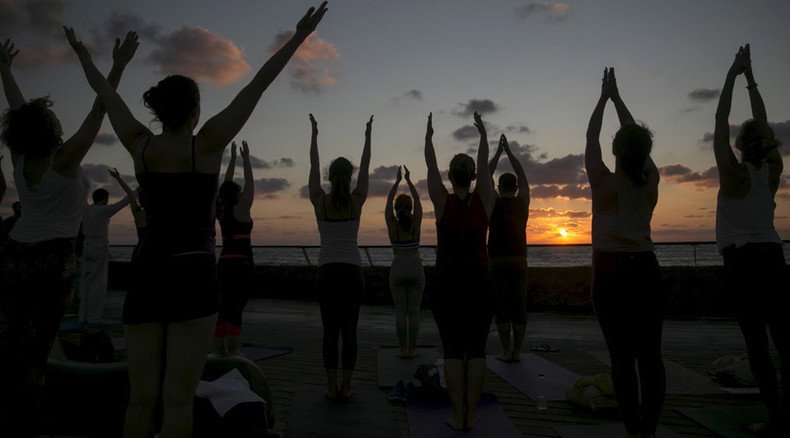India creates database of 1,500 yoga poses to thwart Western patent claims

In order to protect traditional Indian yoga techniques from being patented in the West, the Indian government has decided to shortlist over 1,500 asanas, creating a digital video database of the poses in an effort to thwart copyright attempts in a global multi-billion dollar industry.
Classifying the yoga positions, known as asanas, as part of the “traditional knowledge” of the country, the Council for Scientific and Industrial Research (CSIR) of India’s Ministry of Science and Technology, has begun the tedious work of videotaping Indian yoga expertise. So far, it has uploaded recordings of 250 asanas into a Traditional Knowledge Digital Library (TKDL) database.
“Our experts have identified over 1,500 yoga techniques from the literature available from our ancient texts and what is available now,” said Archana Sharma, head of TKDL, as cited by The Indian Express. The government hopes to document the rest of asanas over the next couple of months.
“Once that happens, any attempt to claim patent on the Indian yoga techniques practised since ancient times can be thwarted,” Sharma added.
It is estimated that up to 300 million people practice yoga across the globe, with the US being the world’s largest yoga industry worth over $27 billion. Yet more than half of global yoga enthusiasts are Indians, in a country that until now lacked any organizational approach to the $80bn global industry. Lacking brand names, yoga training in India is mainly run through small idependent businesses.
Since 2001, India has been trying to claim a bigger piece of the industry’s pie, by creating a database of traditional knowledge that will prevent big Western businesses from making money on techniques that are thousands of years old.
Fourteen years later, the TKDL database has started including yoga postures. Previously, TKDL's work focused on documenting medicinal plants and formulations used in Indian systems of medicine. The digital database lists all their entries under international patent classification systems. International patent examiners have access to the TKDL database for patent searches and examinations in multiple languages.
Since 2009, the digital library has helped to thwart at least 200 attempts to steal Indian know-hows, mainly in medicine, including two just last month.
“So, every time when any individual or any MNC [multi-national corporation] files for patent, the major patent offices refer to the TKDL base. On our part, a team is constantly monitoring the patents that are being filed. So, we also file pre-grant opposition. There have been cases when the patent applications were cross-checked with the TKDL database and queries were raised. Following that the applicants withdrew their claims,” said Sharma.
Yoga is an ancient Hindu philosophical, spiritual and physical practice, that was developed in the northern parts of India nearly 5,000 years ago. It combines body movements and fixed postures with meditation, spiritual, and holistic exercises.












